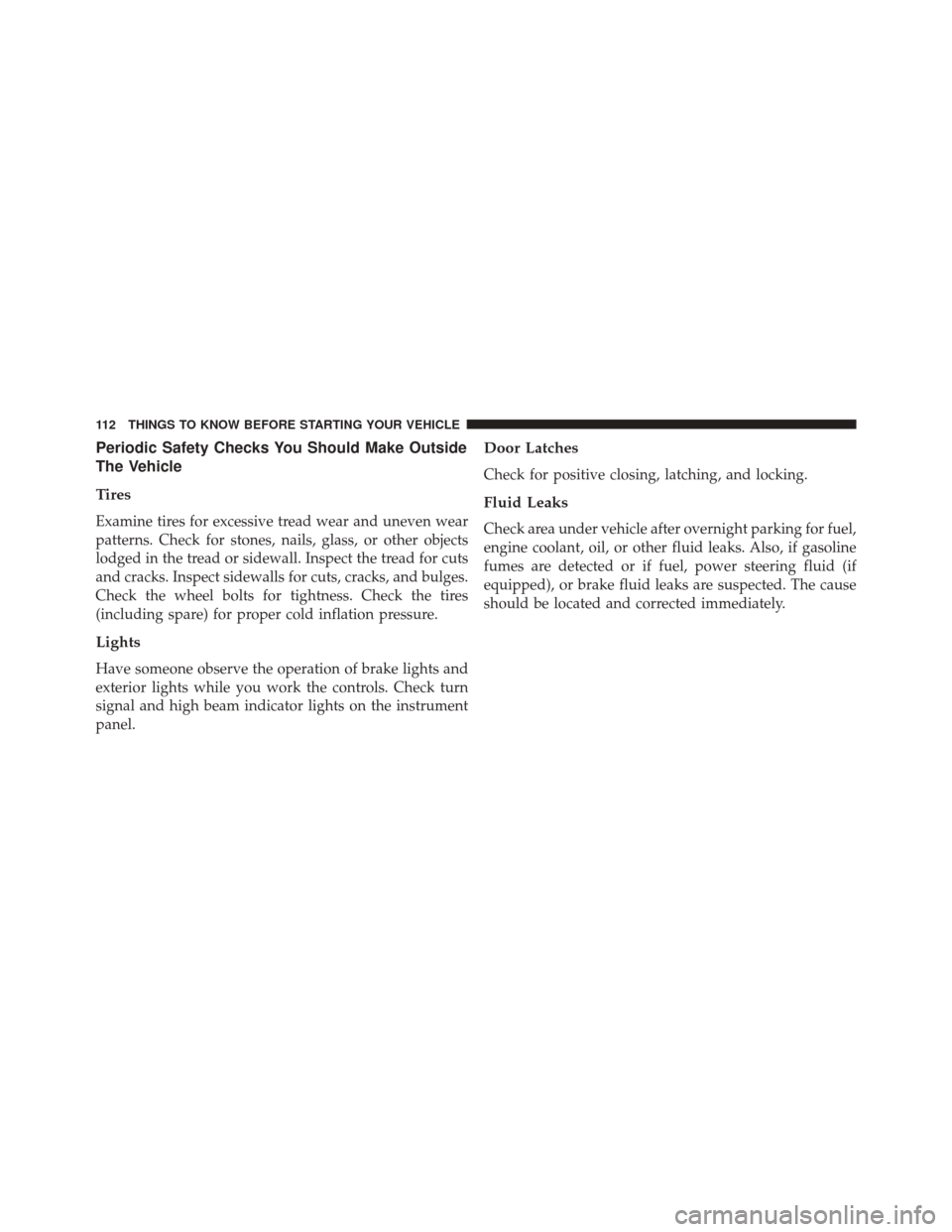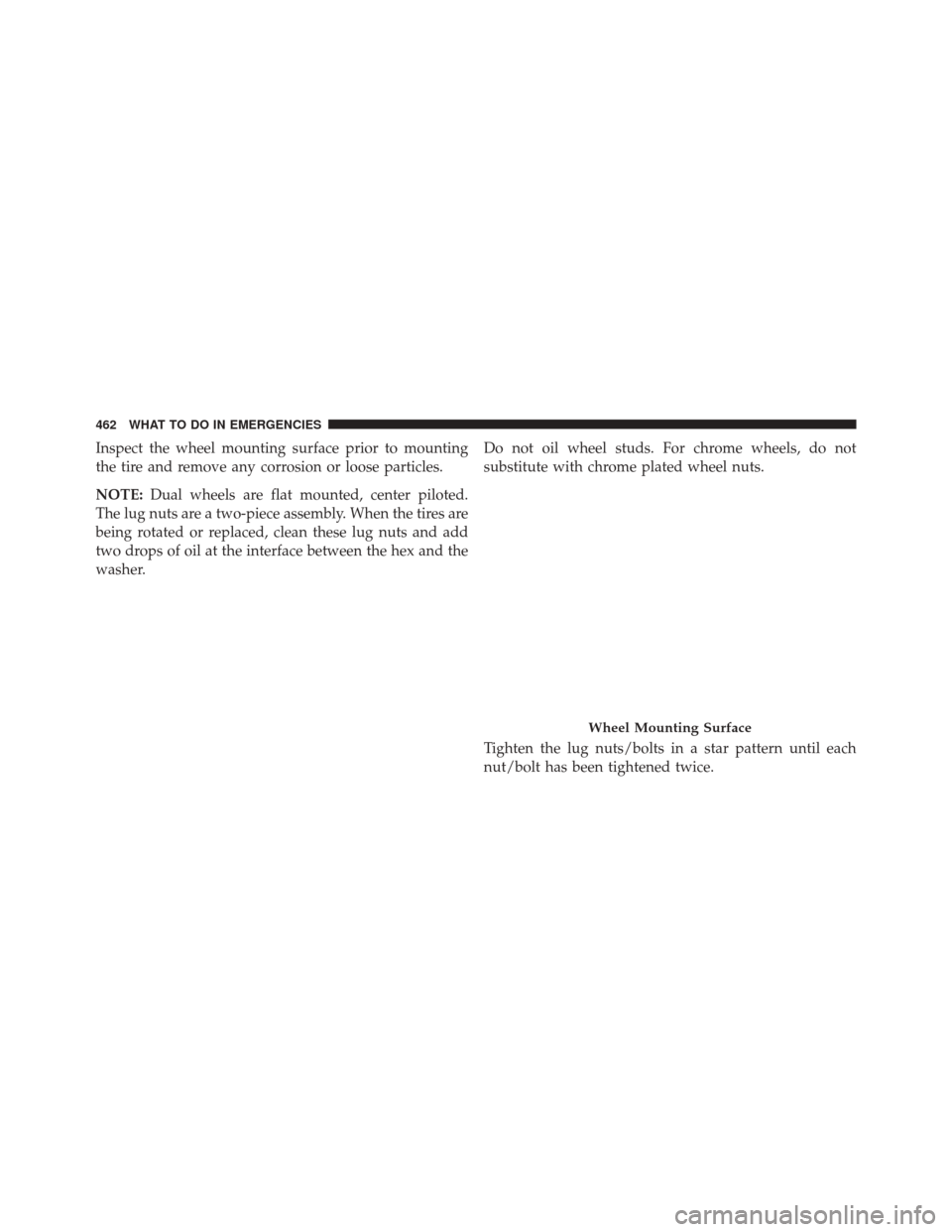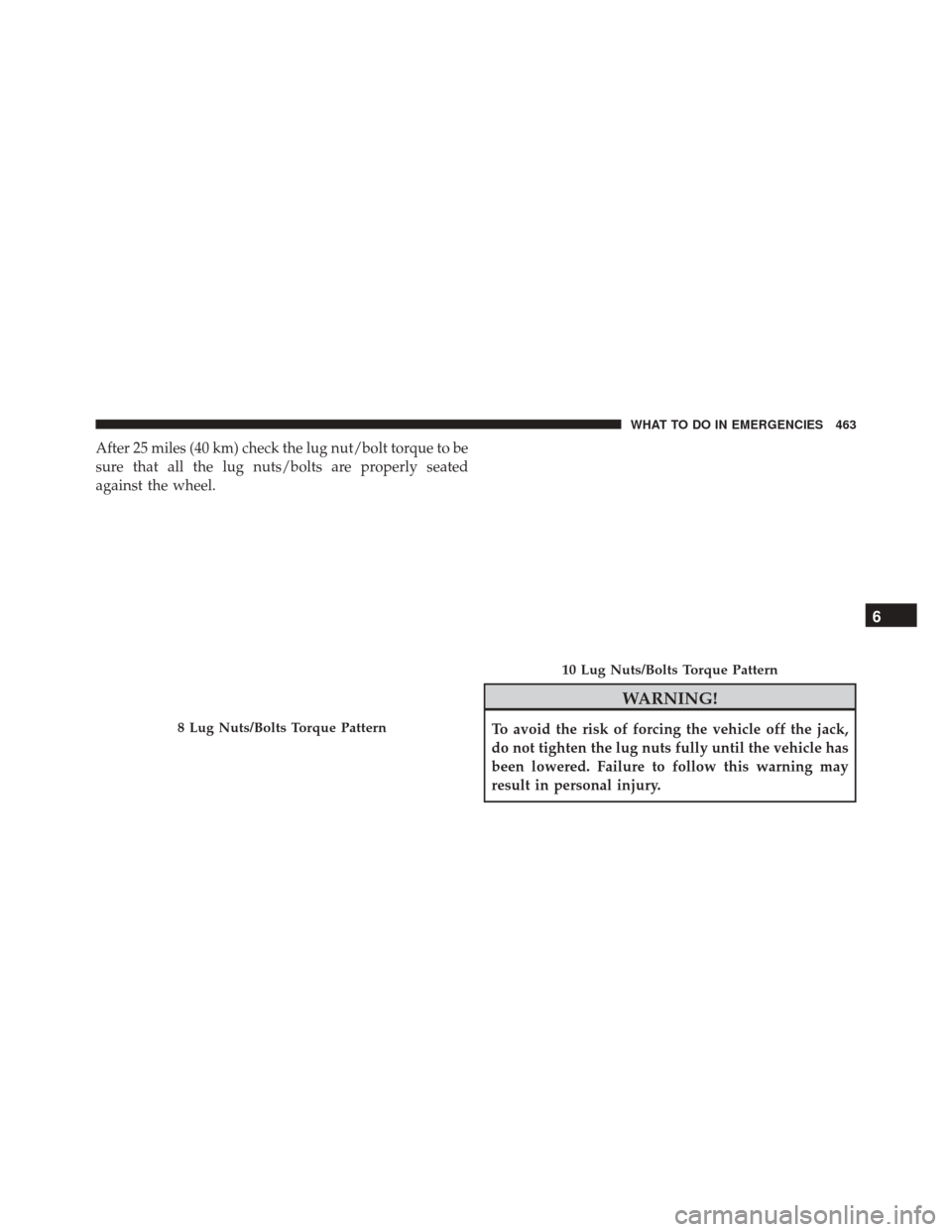Periodic Safety Checks You Should Make Outside
The Vehicle
Tires
Examine tires for excessive tread wear and uneven wear
patterns. Check for stones, nails, glass, or other objects
lodged in the tread or sidewall. Inspect the tread for cuts
and cracks. Inspect sidewalls for cuts, cracks, and bulges.
Check the wheel bolts for tightness. Check the tires
(including spare) for proper cold inflation pressure.
Lights
Have someone observe the operation of brake lights and
exterior lights while you work the controls. Check turn
signal and high beam indicator lights on the instrument
panel.
Door Latches
Check for positive closing, latching, and locking.
Fluid Leaks
Check area under vehicle after overnight parking for fuel,
engine coolant, oil, or other fluid leaks. Also, if gasoline
fumes are detected or if fuel, power steering fluid (if
equipped), or brake fluid leaks are suspected. The cause
should be located and corrected immediately.
112 THINGS TO KNOW BEFORE STARTING YOUR VEHICLE
Inspect the wheel mounting surface prior to mounting
the tire and remove any corrosion or loose particles.
NOTE:Dual wheels are flat mounted, center piloted.
The lug nuts are a two-piece assembly. When the tires are
being rotated or replaced, clean these lug nuts and add
two drops of oil at the interface between the hex and the
washer. Do not oil wheel studs. For chrome wheels, do not
substitute with chrome plated wheel nuts.
Tighten the lug nuts/bolts in a star pattern until each
nut/bolt has been tightened twice.
Wheel Mounting Surface
462 WHAT TO DO IN EMERGENCIES
After 25 miles (40 km) check the lug nut/bolt torque to be
sure that all the lug nuts/bolts are properly seated
against the wheel.
WARNING!
To avoid the risk of forcing the vehicle off the jack,
do not tighten the lug nuts fully until the vehicle has
been lowered. Failure to follow this warning may
result in personal injury.8 Lug Nuts/Bolts Torque Pattern
10 Lug Nuts/Bolts Torque Pattern
6
WHAT TO DO IN EMERGENCIES 463


